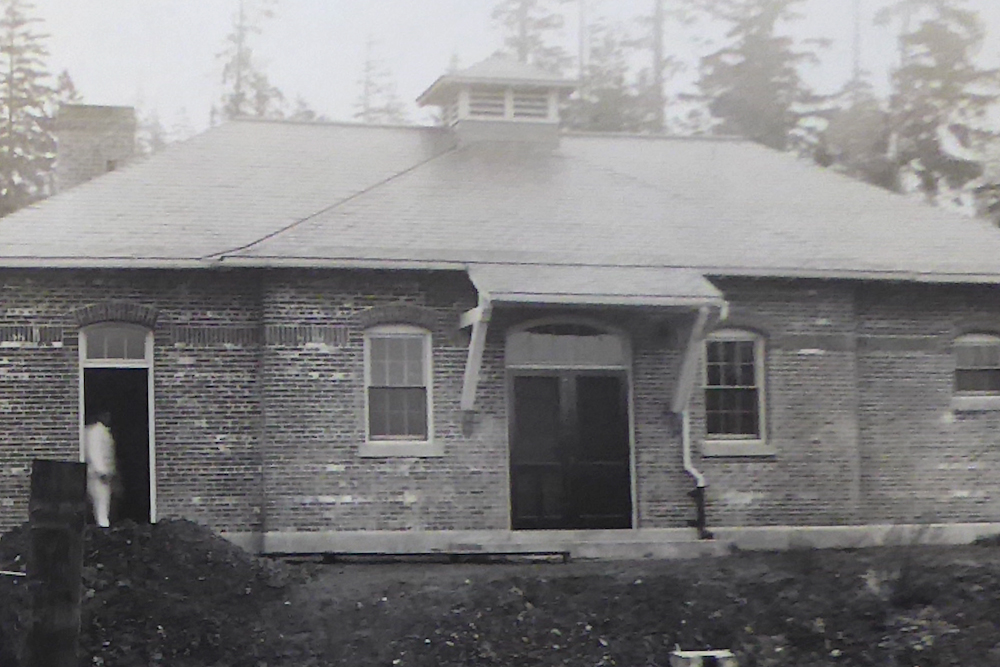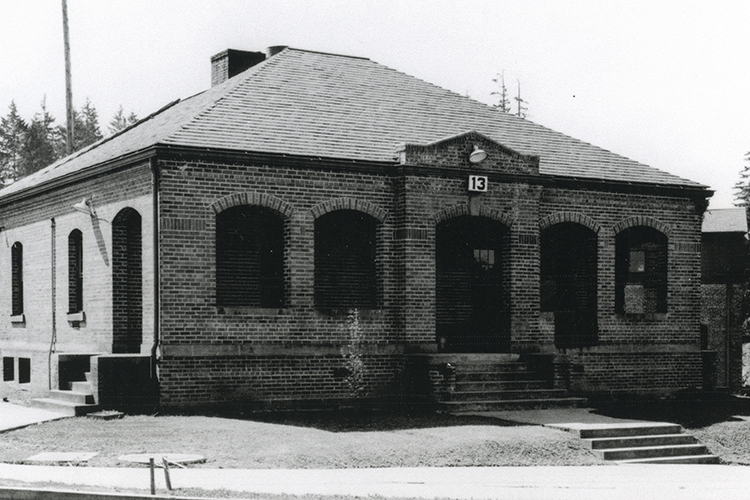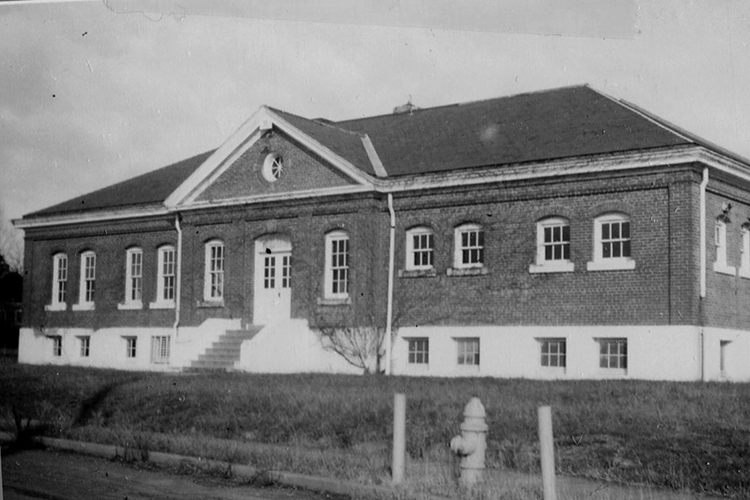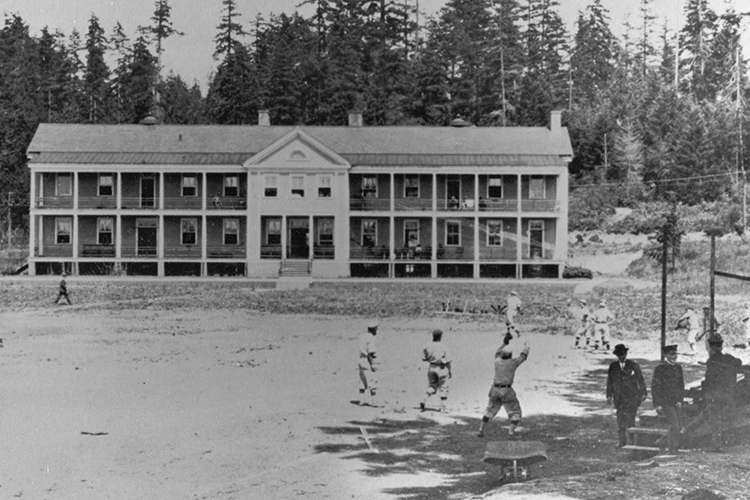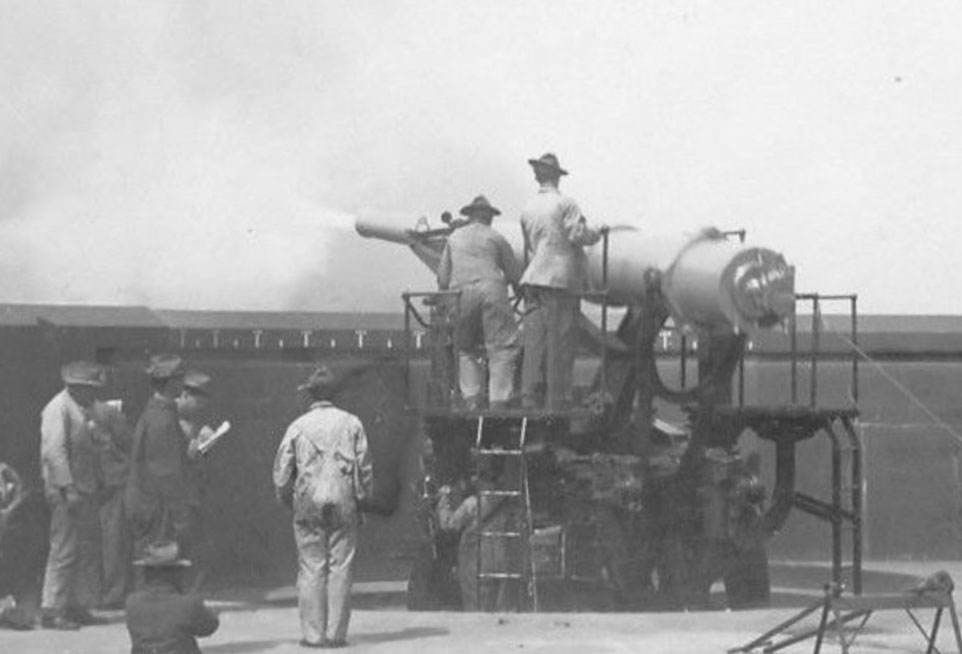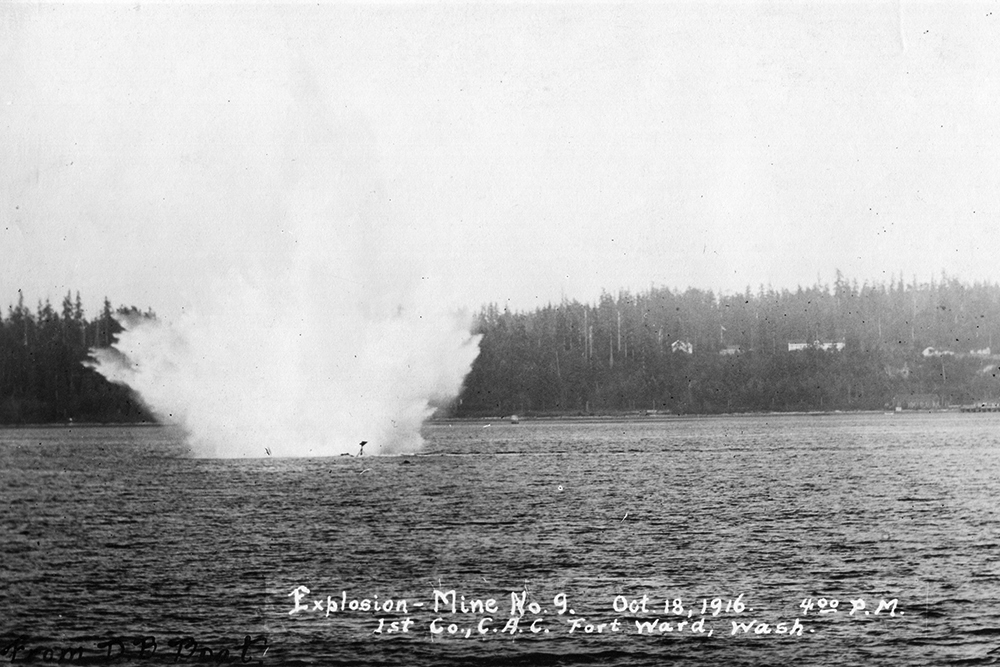In the 1890’s, before Stealth missiles or airplanes, the best way to attack the United States was by sea.
Puget Sound was no exception. To get to Seattle a warship just needed to sneak through Admiralty Inlet at the entrance of Puget Sound, then it was all clear sailing. So the US Army Coast Artillery Corps built three forts – Worden, Casey and Flagler – with artillery batteries to create a choke point called the “Triangle of Fire.”
But just in case a warship slipped through to reach the new Puget Sound Naval Shipyard, they had to get by one more installation first: Fort Ward, at the south end of Bainbridge Island. It became “the little fort at Bean Point.”
Fort Ward soldiers used a floating minefield to guard Rich Passage. Each mine was connected by waterproof electrical cable to its own small firing board on a control panel onshore. Four huge gun batteries protected the minefield from vessels trying to cut the cables.
These were huge construction projects – about 22,000 tons of concrete for gun emplacements alone. A mile of railroad track was built to transport material and guns up from the beach.
The 8-inch diameter guns were the newest technology — “disappearing” guns that were only raised above the concrete parapet when they were loaded and ready to fire. The recoil pushed them back down and out of sight, so they couldn’t be fired upon from the water.
The Fort Ward soldiers were ready for the enemy. But the enemy never came. And beginning in World War I, the military removed all the guns and the mines. By the early 1930s, except for occasional summer camps, Fort Ward was a ghost installation.
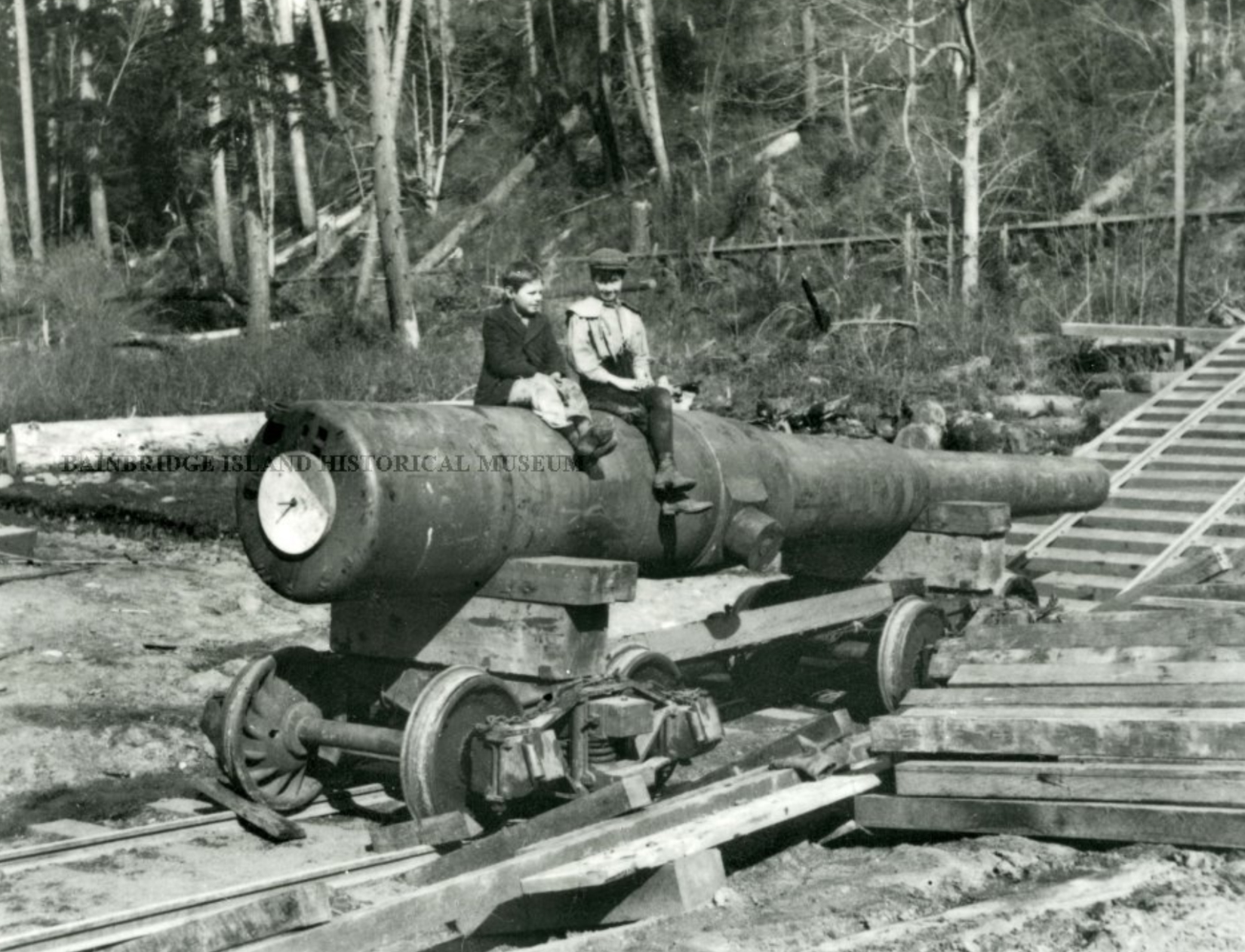
The 8-inch guns of Battery Nash were delivered to the Fort Ward wharf and carried up the hillside on a tramway. Photo courtesy of Bainbridge Island Historical Museum.

To aim the really big guns of Battery Nash, a group of soldiers in a small building on the hillside would use a “coincidence rangefinder” and speaking-tubes or telephone to give the soldiers the coordinates. Fort Ward soldiers were tested for accuracy and once hit 8 out of 10 floating targets, beating the surrounding forts in a skills competition.
Exploring Fort Ward
Select a historic building or site above, as your portal into the stories and lore of historic Fort Ward, Wash.

